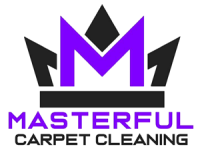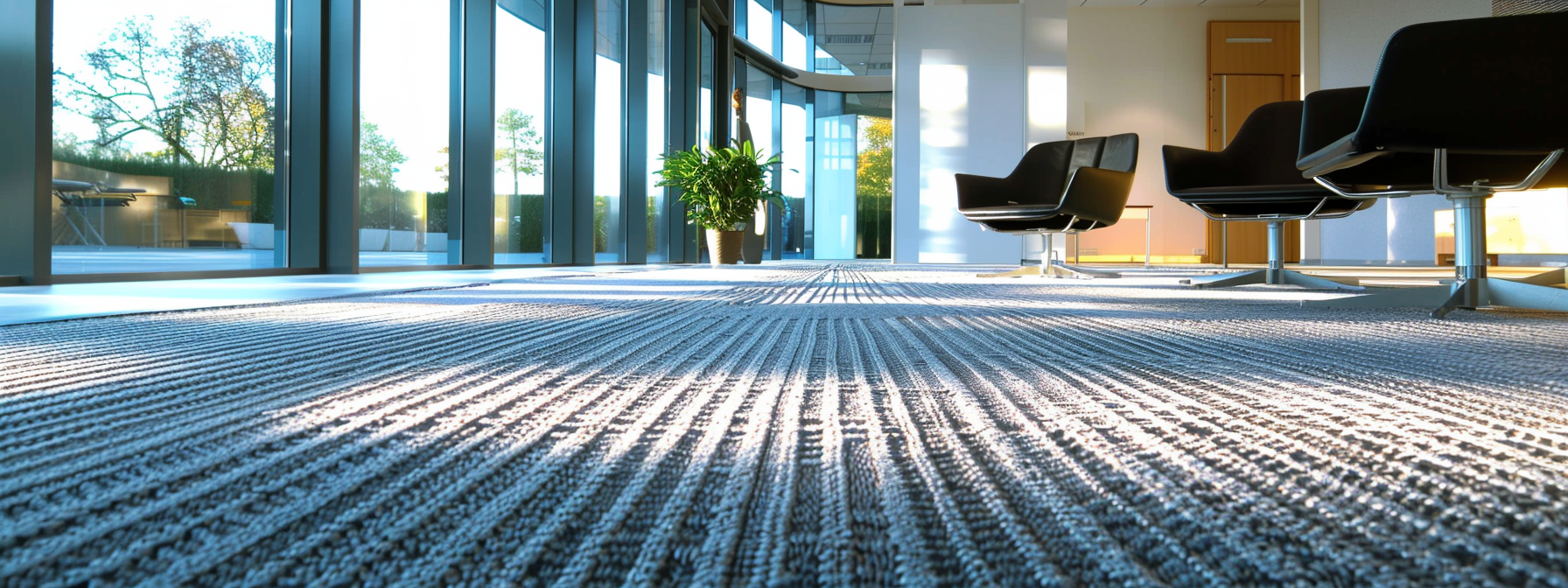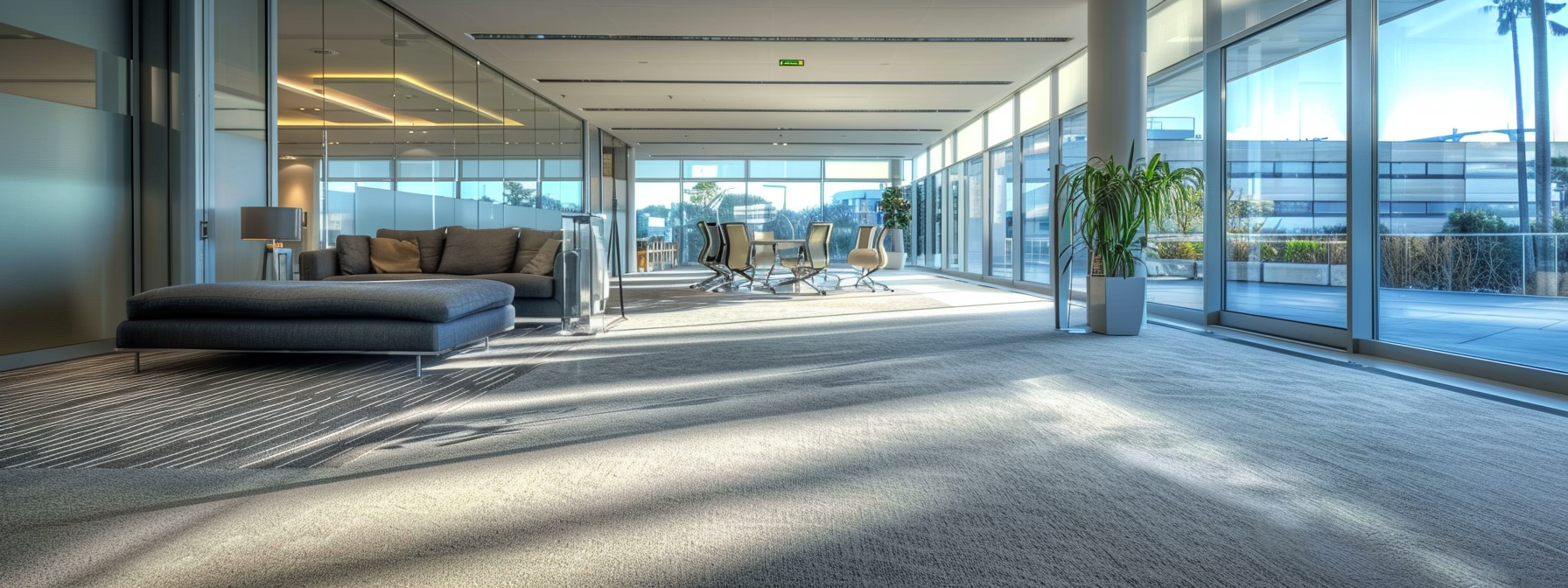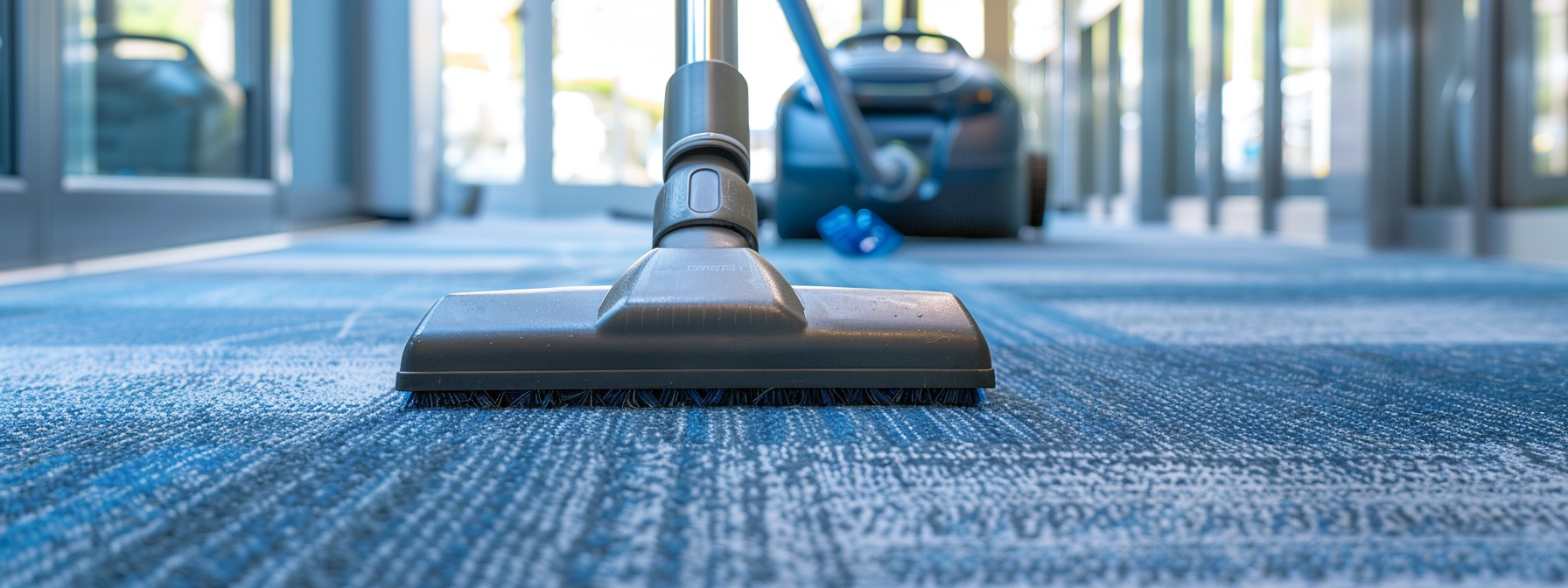Why Carpet Stretching is a Vital Repair Technique

Carpet stretching is a vital repair technique that not only fixes issues like wrinkles and buckling but also contributes to the longevity and aesthetics of your carpet.
What is Carpet Stretching?
Carpet stretching is a specialized repair technique that involves pulling the carpet tighter and re-securing it, effectively removing wrinkles, buckles, and loose areas. This process can be done using specialized tools and usually requires some level of expertise.
Why is Carpet Stretching Important?
The importance of carpet stretching goes beyond mere aesthetics. Wrinkles and buckles in your carpet can be tripping hazards and can also accelerate the wear and tear of the carpet. Stretching helps in rectifying these issues, making your carpet safer and more durable.
The Role of Stretching in Carpet Longevity
Stretching is not just a quick fix; it’s a long-term solution. By removing wrinkles and tightening the carpet, stretching can extend the life of your carpet. A well-stretched carpet also makes for easier cleaning and maintenance, contributing to its longevity.
Carpet Stretching as a Subset of Repair Techniques
While there are various methods to repair and maintain a carpet, stretching stands out for its effectiveness in solving specific issues like wrinkles and loose areas. It is an integral part of comprehensive carpet maintenance, which may also include cleaning, patching, and stain removal.
Carpet stretching is an important aspect of carpet maintenance. It serves multiple purposes, from enhancing safety and aesthetics to extending the lifespan of your carpet.
Whether you’re dealing with an old carpet showing signs of wear or a new installation that needs some adjustments, understanding the role and benefits of carpet stretching can save you both time and money.

Understanding Carpet Stretching
Carpet stretching is a repair technique that involves using specific tools to pull the carpet tighter, effectively eliminating wrinkles and loose areas. It can be a DIY task but often requires professional expertise for best results.
Tools Used in Carpet Stretching
Awl and Carpet Puller: These are the primary tools used in the carpet stretching process. An awl is used to disengage the carpet from the tack strip, while a carpet puller helps in stretching the carpet tightly across the floor.
The Process of Carpet Stretching
- Disengagement: The first step involves using an awl to disengage the carpet from the tack strip along the edges.
- Stretching: A carpet puller is then used to stretch the carpet, pulling it tight to eliminate wrinkles and loose areas.
- Re-securing: Once stretched, the carpet is re-secured to the tack strip, ensuring it stays in place.
- Trimming: Any excess carpet is trimmed away, and the edges are tucked neatly for a finished look.
DIY vs Professional Stretching
Carpet stretching can be a DIY task if you have the right tools and some basic knowledge. For larger areas or more complex issues, professional help is often advisable. Professionals have the expertise and specialized tools to ensure the job is done correctly and safely.
Understanding the tools and processes involved in carpet stretching can help you decide whether it’s a task you can tackle yourself or if professional help would be more beneficial. The technique is effective for solving specific carpet issues like wrinkles and loose areas, making it an essential part of carpet maintenance.

Why is Stretching Necessary?
Carpet stretching is not just a cosmetic fix; it serves as a vital repair technique that addresses several underlying issues that can affect the longevity and safety of your carpet.
Problems Solved by Carpet Stretching
- Wrinkles and Buckling: One of the most common issues that necessitate carpet stretching is the presence of wrinkles and buckling. These not only mar the appearance of your carpet but also create tripping hazards. Stretching pulls the carpet tight, eliminating these issues and making your space safer.
- Carpet Deterioration: Wrinkles and loose areas can lead to faster wear and tear, causing your carpet to deteriorate prematurely. Stretching helps in evenly distributing the foot traffic, thereby prolonging the lifespan of the carpet.
- Loose Carpets: A loose carpet is not just an eyesore but also a safety concern. Stretching ensures that the carpet is firmly attached to the tack strips, reducing the risk of slips and falls.
Preventing Carpet Deterioration
Stretching is not just a reactive measure; it’s also a proactive one. By keeping your carpet taut and wrinkle-free, stretching prevents the fabric from deteriorating quickly. This is particularly important in high-traffic areas where the risk of wear and tear is higher.

The Benefits of Carpet Stretching
Carpet stretching is more than just a quick fix; it offers a multitude of benefits that contribute to the overall well-being of your living space. Here’s why it’s an important part of carpet maintenance.
Extending Carpet Lifespan
- Carpet Longevity: One of the most significant advantages of carpet stretching is its ability to extend the lifespan of your carpet. A well-stretched carpet distributes foot traffic more evenly, reducing wear and tear on specific areas. This ultimately leads to a longer-lasting carpet, saving you money in the long run.
Improving Aesthetics
- Visual Appeal: A wrinkled or buckled carpet can be an eyesore. Stretching your carpet not only eliminates these issues but also enhances the overall visual appeal of the room. A flat, smooth carpet is more pleasing to the eye and can even make the room look bigger and more inviting.
Easier Cleaning
- Carpet Cleaning: Believe it or not, a well-stretched carpet is easier to clean. Wrinkles and folds are notorious for trapping dirt, dust, and allergens. Stretching the carpet smooths out these problem areas, making it easier for your vacuum cleaner to remove debris, leading to a cleaner and healthier living environment.
Tips and Advice
Carpet stretching is not just a reactive measure to solve immediate problems; it’s a proactive approach that offers long-term benefits. From extending the lifespan of your carpet to improving its aesthetics and making cleaning easier, the advantages are manifold.
So, the next time you notice a wrinkle or a loose area, remember that stretching can do much more than just make it flat. It’s an investment in the longevity and beauty of your home.

DIY Carpet Stretching Guide
If you’re a hands-on homeowner looking to tackle carpet stretching yourself, you’re in the right place.
Required Tools
DIY Tools: Before you begin, make sure you have the necessary tools at hand. You’ll need a carpet stretcher, knee kicker, utility knife, and some carpet tape. These tools are essential for a successful stretching process.
Step-by-Step Guide
- Preparation: Start by removing all furniture from the room and vacuuming the carpet thoroughly.
- Detach Edges: Use your utility knife to carefully detach the edges of the carpet from the tack strip along the walls.
- Initial Stretch: Place the knee kicker about 2 inches from the wall where you want to start stretching. Apply pressure with your knee to stretch the carpet toward the opposite wall.
- Final Stretch: Now, use the carpet stretcher for a more intensive stretch. Place one end against the wall and the other end about 6 inches from the opposite wall. Push the lever down to stretch the carpet.
- Secure the Carpet: Once stretched, use your utility knife to trim any excess carpet and then reattach it to the tack strips.
- Seal Seams: If your carpet has seams, use carpet tape to seal them securely.
- Inspect: Finally, walk around to inspect the carpet. Make sure there are no bumps or wrinkles.
Safety Precautions
Is DIY Carpet Stretching Safe?: Yes, but safety should be your top priority. Always wear gloves to protect your hands and kneepads for your knees. Make sure to read the instruction manuals for all tools and follow them carefully.
Carpet stretching is a manageable DIY task if you have the right tools and follow the proper steps. If you encounter any difficulties or are not confident in your abilities, it’s always best to seek professional help.

When to Opt for Professional Carpet Stretching
While DIY carpet stretching can be a rewarding project, there are scenarios where seeking professional help is not only advisable but essential. This section will guide you through the circumstances that warrant expert intervention and the benefits of hiring a professional service.
Scenarios Requiring Professional Help
- Complex Layouts: If your room has a complex layout with multiple corners, angles, or obstacles like stairs, it’s best to hire professionals.
- Large Areas: Stretching carpet in a large room or across multiple rooms can be challenging and time-consuming. Professionals have the tools and expertise to handle such tasks efficiently.
- Old or Delicate Carpets: Carpets that are old or made from delicate materials may require special care that only professionals can provide.
- Recurring Issues: If you’ve tried DIY stretching and the problems persist, it’s a sign that you need professional help.
Benefits of Hiring Professionals
- Expertise: Professionals have the training and experience to handle all types of carpets and issues. They can ensure the job is done right the first time.
- Efficiency: With specialized tools and a trained team, professionals can complete the job much faster than a DIY approach.
- Warranty: Many professional services offer a warranty on their work, giving you peace of mind.
- Quality: The quality of work is generally higher when done by professionals, ensuring your carpet looks its best and lasts longer.
Cost Considerations
How Much Does It Cost?: The cost of professional carpet stretching varies depending on the size of the area, the complexity of the job, and your location. It’s advisable to get multiple quotes for comparison.
While DIY carpet stretching is an option, there are scenarios where professional help is the better choice. Not only do professionals offer expertise and efficiency, but they also provide warranties that can save you time and money in the long run.

Frequently Asked Questions (FAQ)
Is a power stretcher used in carpet stretching?
- Yes, a power stretcher is a specialized tool used in carpet stretching to ensure the carpet is pulled tight and secured properly, especially over larger areas.
Can poor installation lead to carpet wrinkles?
- Yes, Poor installation techniques can result in carpet wrinkles, as the carpet may not be stretched and secured correctly.
Is carpet padding replaced during complete carpet replacement?
- Yes, During a complete carpet replacement, the carpet padding is usually replaced to ensure proper installation and longevity of the new carpet.
Do businesses often require professional carpet cleaning services?
- Yes, Businesses, especially those with heavy foot traffic, often require professional carpet cleaning services to maintain indoor air quality and aesthetic appeal.
Can burns and bleach spots be addressed by high-quality carpet repair services?
- Yes, High-quality carpet repair services can handle a variety of carpet problems, including burns and bleach spots, using specialized techniques and advanced equipment.
Are loose seams a sign of improper installation?
- Yes, Loose seams often indicate improper installation and may require carpet repair or re-stretching by experienced professionals.
Is carpet buckling more common in humid climates?
- Yes, Carpet buckling is more prevalent in humid climates due to the moisture affecting the carpet fibers and padding.
Do technicians use special tools for carpet restretching?
- Yes, Experienced technicians utilize special tools and advanced equipment for carpet restretching to ensure the carpet returns to its original form.
Can pet accidents cause types of damage that require carpet repair?
- Yes, Pet accidents can cause various types of damage to carpets, such as stains or odors, that may require professional carpet repair services.
Is the alignment of carpets important for their overall appearance?
- Yes, Proper alignment of carpets is key for maintaining their aesthetic appeal and can be ensured through proper techniques employed by professional installers.
Can Carpet Repair services fix frayed carpet edges?
- Yes, Carpet Repair services commonly address issues like frayed or damaged carpet edges, restoring them to their original condition.
Is wall carpet more susceptible to wrinkling than other types?
- No, Wall carpet is not necessarily more susceptible to wrinkling; the likelihood of wrinkles depends on various factors like installation quality and carpet material.
Can wrinkled carpet be fixed by stretching services?
- Yes, Stretching services are specifically designed to eliminate wrinkles in carpets, making them look as good as new.
Does heavy furniture contribute to the need for Carpet Repair?
- Yes, Heavy furniture can cause indentations and stress on the carpet, leading to issues that may require Carpet Repair services.
Is professional cleaning recommended before undergoing Carpet Repair?
- Yes, Many Carpet Repair services recommend professional cleaning before repair work to assess the true condition of the carpet.
Are signs of damage like stains and odors usually addressed in professional cleaning before Carpet Repair?
- Yes, Professional cleaning often precedes Carpet Repair to tackle signs of damage like stains and odors, providing a clean slate for repair work.
Summing Up the Importance
Carpet stretching is an indispensable part of carpet maintenance. From resolving issues like wrinkles and buckling to extending the lifespan of your carpet, the benefits are manifold. Whether you opt for a DIY approach or seek professional help, understanding the nuances of this repair technique can save you both time and money.

Key Takeaways
Here are the essential points to remember about carpet stretching:
- Necessity: Stretching addresses common carpet issues like wrinkles, buckling, and loose areas.
- Benefits: It extends the carpet’s lifespan, improves its visual appeal, and facilitates easier cleaning.
- DIY vs Professional: While DIY stretching is possible, certain scenarios warrant professional intervention for optimal results.
Final Recommendations
If you’re considering stretching your carpet, start by assessing the severity of the issues. Minor wrinkles might be a DIY job, but for significant buckling or large areas, professional help is advisable. Always remember to use the right tools and follow safety guidelines.
Your Carpet Maintenance Checklist
To keep your carpet in top shape, here’s a quick checklist:
- Regular vacuuming to prevent dirt accumulation
- Periodic stretching to address any loose areas
- Professional cleaning at least once a year
- Immediate action on spills to prevent stains
Carpet stretching is a vital repair technique that offers both functional and aesthetic benefits. Whether you’re a homeowner looking to extend the life of your investment or a DIY enthusiast keen on home maintenance, understanding carpet stretching is invaluable.
So, the next time you notice a wrinkle or a loose end, you know what to do. Happy stretching!
Author
-

As the Co-Owner of Masterful, Randy has been providing quality cleaning services to the Salem and Portland areas of Oregon for many years. He has built a reputation for excellence in the industry. His team take prides in using the latest cleaning techniques and technologies to deliver exceptional results every time.
View all posts






